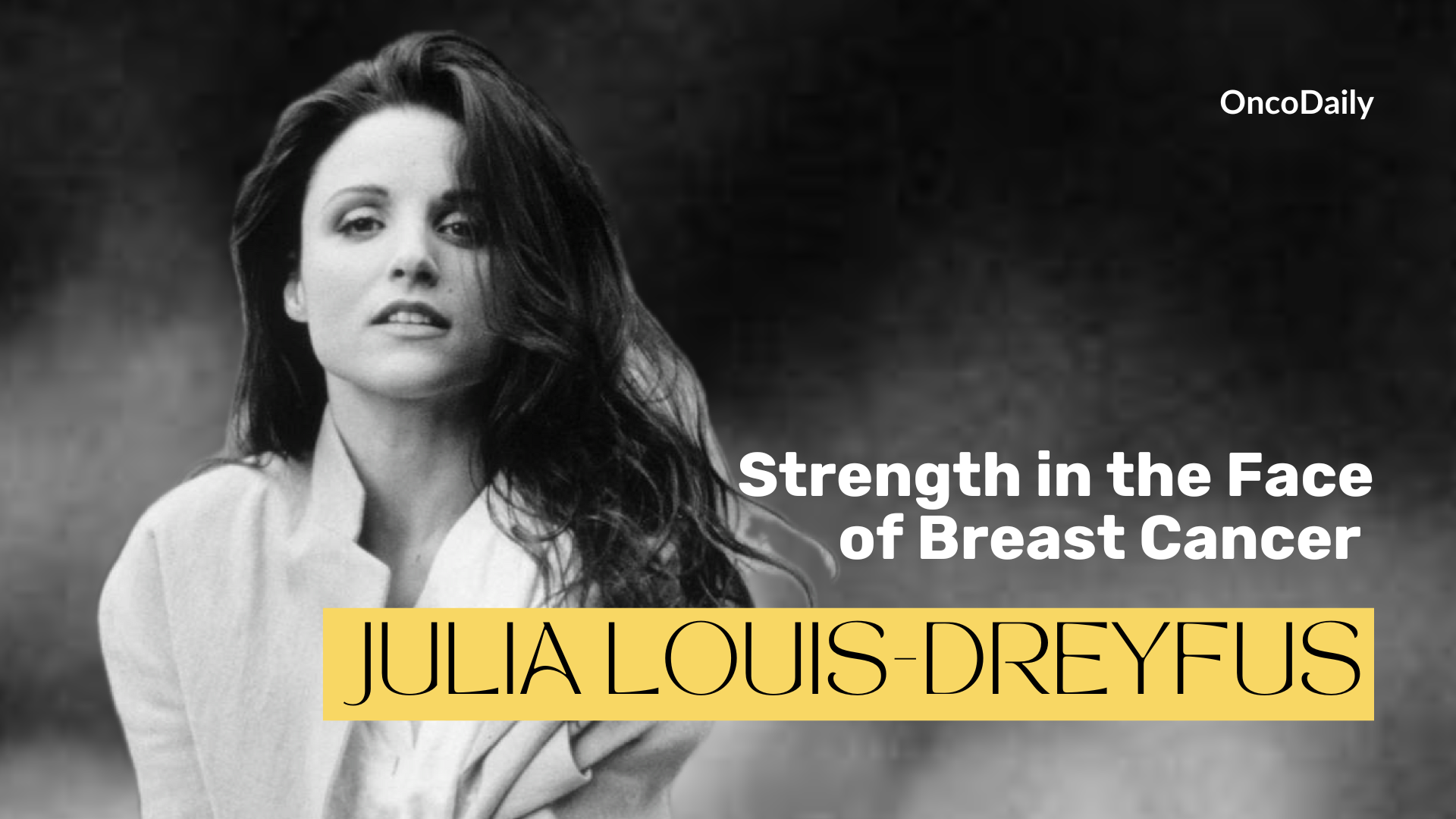Julia Louis-Dreyfus is a comedic icon known for her roles in “Seinfeld,” “The New Adventures of Old Christine,” and “Veep,” where she has won 11 Emmy Awards. In 2017, she bravely announced her battle with breast cancer, raising awareness about the disease.Breast cancer affects about 1 in 8 women in the U.S., but the 5-year survival rate for localized cases is about 99%, highlighting the importance of early detection. Her openness about her journey has inspired many, fostering crucial conversations about women’s health and resilience in the face of adversity.
How Did Julia Louis-Dreyfus Get Diagnosed with Breast Cancer?
Julia Louis-Dreyfus’s breast cancer diagnosis came just one day after she won the Emmy for Outstanding Actress in a Comedy Series for her role in “Veep” in September 2017. In her acceptance speech, she celebrated her win but also acknowledged the political climate, making it a poignant moment. The very next day, she received the news of her cancer diagnosis, which added an unexpected and deeply personal layer to her victory.
Her experience underscores the critical importance of routine check-ups and early detection. Regular screenings can catch cancer at its earliest and most treatable stages, significantly improving survival rates. Louis-Dreyfus’s journey has emphasized that proactive health measures are essential, not just for awareness, but for the potential to save lives. By sharing her story, she has encouraged others to prioritize their health and seek regular medical advice, fostering a culture of vigilance around breast cancer.
Symptoms
Julia Louis-Dreyfus noticed a lump in her breast during a routine check-up, which ultimately led to her diagnosis of breast cancer. This symptom—a palpable lump—is one of the most common signs of breast cancer. Other typical indicators can include changes in breast shape or size, unusual swelling, or changes in the skin texture or appearance.
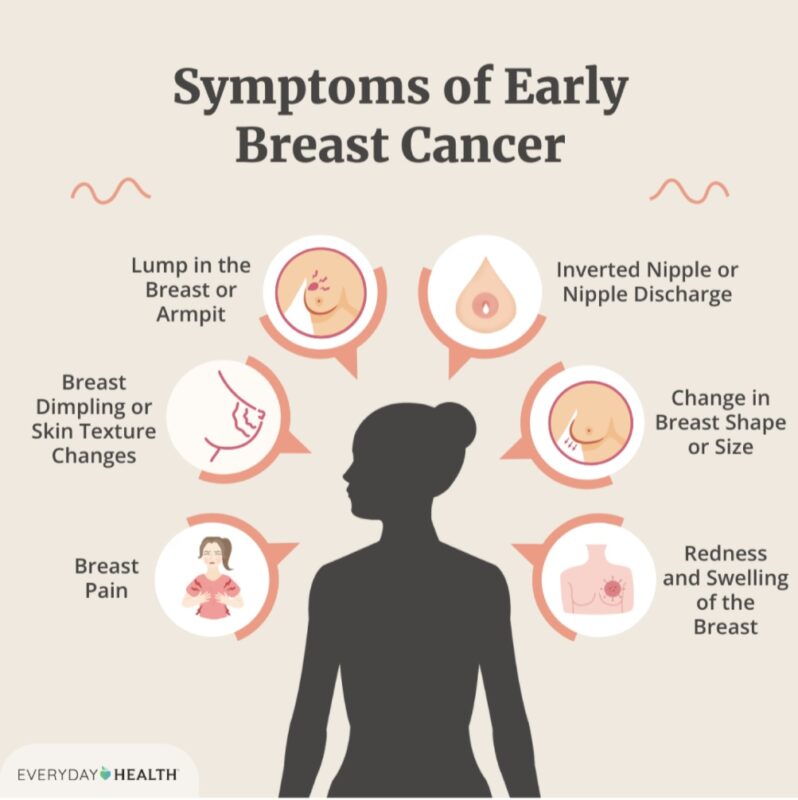
Her experience highlights the importance of paying close attention to any physical changes in the body. Many breast cancers are detected through self-exams or routine screenings, and being vigilant can lead to earlier diagnoses, which significantly improve treatment outcomes. Louis-Dreyfus’s journey serves as a powerful reminder for everyone to prioritize regular check-ups and to be proactive about any concerning symptoms, encouraging open conversations about health and awareness of one’s own body.
What Were Julia Louis-Dreyfus’s Initial Reactions to Her Diagnosis?
Receiving her breast cancer diagnosis was a profound emotional shock for Julia Louis-Dreyfus, particularly coming just a day after her Emmy win for “Veep.” In her initial response, she expressed a whirlwind of feelings, nothing.
“I’m so grateful for my family and friends, but I’m also really, really scared. This candid admission resonated with many who face similar battles”.
However, Louis-Dreyfus processed her diagnosis with remarkable humor and resilience. She famously remarked.
“If I had known this was coming, I would have just taken a nap!”
This lighthearted approach not only helped her cope but also served to uplift those around her. She often turned to laughter as a way to manage the stress of treatment, saying.
“Laughter is truly the best medicine.”
Her openness about the emotional rollercoaster of her journey, combined with her humor, highlighted her strength. Louis-Dreyfus leaned on her supportive network of family and friends, reminding others of the importance of connection during difficult times. Her ability to navigate this challenge with grace and levity has inspired many, showcasing the power of humor and resilience in the face of adversity.
What was the Prognosis?
Julia Louis-Dreyfus was diagnosed with Stage IIIC breast cancer, which significantly influenced her treatment plan involving chemotherapy, surgery, and radiation. The prognosis for Stage IIIC breast cancer has a 5-year survival rate of about 53% (American Cancer Society, 2023), underscoring the aggressive nature of the disease.
Her treatment typically included neoadjuvant chemotherapy to shrink tumors, followed by surgery and additional therapy. This experience highlights the importance of early detection, as localized breast cancer has a much higher survival rate of approximately 99% (American Cancer Society, 2023). By sharing her journey, Louis-Dreyfus raised awareness about breast cancer and the need for routine screenings.
What Treatments Did Julia Louis-Dreyfus Undergo?
Julia Louis-Dreyfus underwent a double mastectomy as part of her treatment for Stage IIIC breast cancer, which involved the removal of both breasts to eliminate cancer. This surgery can profoundly impact body image and emotional well-being. She also received chemotherapy, a regimen of powerful drugs aimed at targeting cancer cells. While effective, chemotherapy can cause side effects like fatigue, nausea, and hair loss, significantly affecting daily life.These treatments are crucial for managing advanced breast cancer but can lead to emotional challenges. Louis-Dreyfus’s experience highlights the importance of holistic care that addresses both physical and emotional health during such a difficult journey.
Surgery
The decision-making process for a mastectomy involves discussions with her medical team, considering factors such as tumor size, location, and overall health. Surgical margins—healthy tissue surrounding the tumor—are crucial; clear margins indicate that no cancer cells remain, which is linked to better outcomes. According to the American Society of Clinical Oncology, achieving negative surgical margins is associated with a 30% reduction in the risk of recurrence (American Society of Clinical Oncology, 2022).
Recovery expectations after a double mastectomy can vary widely. Patients may experience pain, swelling, and emotional challenges as they adjust to physical changes. Statistics indicate that about 75% of patients report some level of emotional distress after surgery (Kessels et al., 2018). Rehabilitation often includes physical therapy to regain strength and mobility. Louis-Dreyfus’s experience underscores the importance of a supportive care network, as both emotional and physical healing are vital for recovery.
Chemotherapy
Julia Louis-Dreyfus underwent chemotherapy as a crucial part of her treatment for Stage IIIC breast cancer. This process involves multiple cycles of powerful drugs aimed at targeting cancer cells, typically following surgery. Common side effects include fatigue, nausea, hair loss, and increased infection risk, with about 70% of patients experiencing fatigue (American Cancer Society, 2022).
To cope with these challenges, patients often engage in open communication with healthcare providers, support groups, and self-care practices like exercise. Research shows that regular physical activity can help alleviate fatigue during treatment (Schmitz et al., 2010).
Louis-Dreyfus highlighted the importance of humor in her journey, noting it helped her manage the emotional and physical difficulties. Humor has been linked to improved quality of life for cancer patients (Dunn et al., 2012). Overall, chemotherapy was vital in maximizing her chances of recovery, contributing to the approximately 53% five-year survival rate for Stage IIIC breast cancer (American Cancer Society, 2022).
How Did Julia Louis-Dreyfus Overcome Breast Cancer?
Julia Louis-Dreyfus’s journey through treatment for Stage IIIC breast cancer was filled with significant mental and emotional challenges. She faced fear and vulnerability, especially during chemotherapy, but maintained her sense of humor to cope.
The support of her family and friends was crucial throughout her recovery. They provided emotional strength and practical help, helping her navigate the ups and downs of treatment. Louis-Dreyfus emphasized that it’s okay to feel scared, highlighting the importance of community in the healing process. Her experience underscores how resilience can be bolstered by the love and support of those closest to us.
Support from Family and Friends
Julia Louis-Dreyfus’s journey through treatment for Stage IIIC breast cancer was filled with significant mental and emotional challenges. She faced fear and vulnerability, especially during chemotherapy, but maintained her sense of humor to cope.
The support of her family and friends was crucial throughout her recovery. They provided emotional strength and practical help, helping her navigate the ups and downs of treatment. Louis-Dreyfus emphasized that it’s okay to feel scared, highlighting the importance of community in the healing process. Her experience underscores how resilience can be bolstered by the love and support of those closest to us.

Mental and Emotional Challenges
Julia Louis-Dreyfus faced significant psychological challenges following her breast cancer diagnosis and during treatment. The fear and uncertainty of her situation weighed heavily on her, prompting her to prioritize her mental health actively.
To cope, she embraced humor as a powerful tool, using laughter to alleviate anxiety and maintain a positive perspective. In interviews, she often quipped about her experiences, finding light even in dark moments. This approach not only helped her but also connected her with others facing similar challenges.
Additionally, Louis-Dreyfus practiced mindfulness, focusing on being present and appreciating small joys in everyday life. This combination of humor and mindfulness enabled her to navigate the emotional rollercoaster of her journey, fostering resilience and promoting a healthier mental state throughout her treatment. Her experience serves as an inspiring reminder of the importance of mental well-being in the face of adversity.
How Did Advocacy and Public Awareness Help?
Julia Louis-Dreyfus has effectively used her platform to raise awareness about breast cancer and advocate for early detection. After her diagnosis in 2017, she emphasized the importance of regular screenings, stating, “I want to encourage women to prioritize their health and get screened.”
She participated in campaigns with organizations like the Breast Cancer Research Foundation, speaking at events and using social media to share her journey and information about the disease. Through her advocacy, Louis-Dreyfus has fostered a sense of community among those affected by breast cancer, inspiring many to prioritize their health and engage in open conversations about the illness.
Public Speaking and Advocacy
Julia Louis-Dreyfus has participated in several public speaking engagements where she shared her cancer experience. Notably, she discussed her journey on “The Ellen DeGeneres Show,” where she highlighted the importance of early detection and her personal insights into navigating treatment.
Additionally, she made appearances on “Jimmy Kimmel Live!” and “The Late Show with Stephen Colbert,” where she openly talked about her diagnosis and the emotional challenges of cancer treatment. These platforms allowed her to reach a wide audience, raising awareness and encouraging conversations about breast cancer.

Louis-Dreyfus has also been involved in health-related campaigns, such as her partnership with the Breast Cancer Research Foundation, where she advocated for research funding and education on breast cancer. Her commitment to using her voice for advocacy has not only inspired many but also fostered a greater understanding of the disease and the importance of regular screenings.
Collaborations with Health Organizations
Julia Louis-Dreyfus has collaborated with several health organizations to raise awareness about breast cancer and advocate for affordable healthcare. One notable partnership is with the Breast Cancer Research Foundation (BCRF), where she has participated in campaigns aimed at increasing funding for breast cancer research. Her involvement has helped shine a spotlight on the importance of supporting scientific research and advancing treatment options.
In addition to her work with BCRF, Louis-Dreyfus has been active in campaigns focused on healthcare accessibility. She has spoken out about the need for affordable healthcare, emphasizing that it is crucial for early detection and treatment of diseases like breast cancer. Her public statements have often highlighted the disparities in healthcare access, calling for systemic changes to ensure that everyone can receive the care they need.
Through these collaborations, Louis-Dreyfus has not only raised awareness about breast cancer but also mobilized support for important health initiatives. Her advocacy has had a significant impact, inspiring others to join the fight for better healthcare access and supporting research that can lead to breakthroughs in treatment and prevention.
What Is Julia Louis-Dreyfus’s Life Like After Cancer?
Since completing her treatment for breast cancer, Julia Louis-Dreyfus has remained a passionate advocate for health issues, particularly breast cancer awareness and affordable healthcare. She continues to use her platform to speak out about the importance of early detection and support for those affected by the disease.
After her treatment, she returned to work with renewed vigor, reprising her role in the comedy series “Veep” and embracing new projects. This return marked a significant milestone in her journey, reflecting her resilience and determination. Louis-Dreyfus has shared that her experience with cancer has given her a fresh perspective on life, emphasizing gratitude and the importance of enjoying each moment. Despite ongoing challenges, she approaches life with optimism, using her voice to inspire and support others facing similar struggles.
In April 2025 , the most notable news about Julia Louis-Dreyfus centers on her role as the villainous Valentina Allegra de Fontaine in Marvel’s Thunderbolts, which premiered in early May 2025. She has addressed the strong fan response to her character and shared candid, humorous moments about adjusting to the Marvel Cinematic Universe. Julia described acting as a kind of “on-set mum” to her younger co-stars, supporting them between takes with snacks and encouragement. She also joked that one motivation for joining Marvel was to impress her adult sons, who attended the premiere.
Additionally, Julia gained some viral attention for a funny moment where she admitted she had no idea who a young TikTok star nicknamed “The Rizzler” was when they met, showing her relatable side despite her legendary status.
Overall, recent coverage highlights her successful transition into a major franchise role, her warm rapport with co-stars, and her down-to-earth personality off-screen.
Continued Advocacy Work
Julia Louis-Dreyfus continues to be an active advocate for breast cancer awareness and healthcare issues. Recently, she participated in campaigns with the Breast Cancer Research Foundation (BCRF), promoting fundraising initiatives and research efforts to improve treatment and support for patients.
In public appearances, she has spoken at various health-related events, emphasizing the importance of early detection and the need for systemic healthcare reform. For instance, she has used her platform to advocate for policies that ensure affordable healthcare access, particularly for women.
Additionally, she frequently shares her journey and insights on social media, encouraging conversations around breast cancer and mental health. Her ongoing efforts not only raise awareness but also inspire many to prioritize their health and advocate for necessary changes in healthcare. Through these initiatives, Louis-Dreyfus continues to make a significant impact in the fight against breast cancer.
Ongoing Health Challenges
Since her treatment for breast cancer, Julia Louis-Dreyfus has been open about facing ongoing health challenges, including the long-term effects of chemotherapy and radiation. These may include fatigue, changes in her body, and emotional impacts such as anxiety or depression.
To manage these challenges, she emphasizes the importance of self-care, including regular exercise, mindfulness practices, and maintaining a supportive network of family and friends. Louis-Dreyfus has also spoken about the significance of therapy and counseling in processing her experiences. By prioritizing her mental and physical health, she continues to navigate these long-term effects while remaining an active advocate for breast cancer awareness and healthcare issues.
You Can Also Read Wanda Sykes and Breast Cancer: How She Went Against, How She Survived, and More by Oncodaily
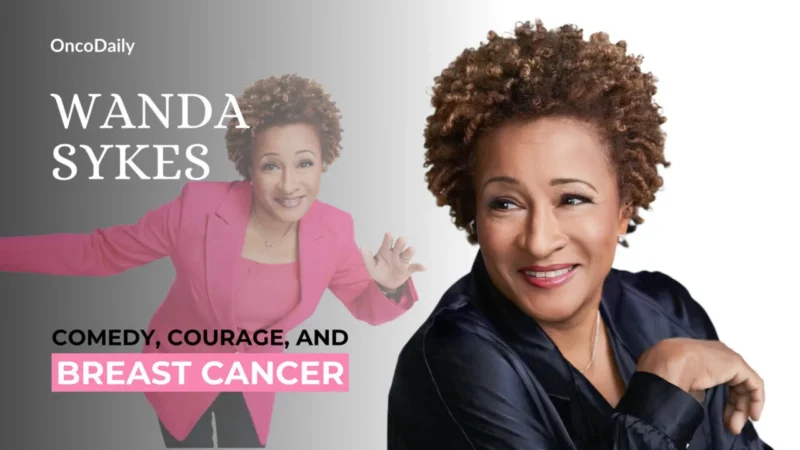
What Causes Breast Cancer?
Genetics play a crucial role in influencing the risk of developing breast cancer, particularly through mutations in specific genes such as BRCA1 and BRCA2.
BRCA Gene Mutations
Mutations in the BRCA1 and BRCA2 genes significantly increase an individual’s risk of breast and ovarian cancer. Women with a BRCA1 mutation have a 55-72% risk of developing breast cancer by age 70, while those with a BRCA2 mutation face a 45-69% risk. These mutations disrupt normal DNA repair processes, leading to the accumulation of genetic damage that can result in cancer.
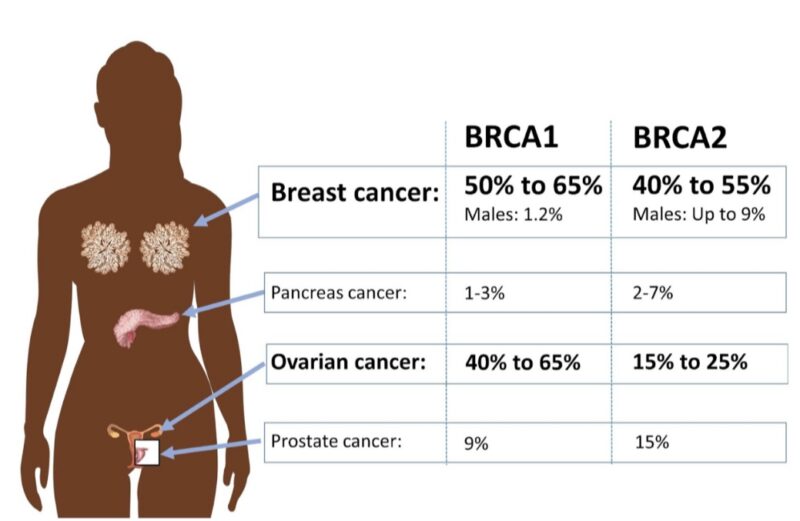
Family History
Individuals with a family history of breast or ovarian cancer are more likely to carry these mutations. Genetic testing can identify at-risk individuals, allowing for proactive measures such as increased surveillance, lifestyle modifications, or preventive surgeries like mastectomy or oophorectomy.
Other Genetic Factors
In addition to BRCA mutations, other genetic variants and syndromes, such as TP53 (associated with Li-Fraumeni syndrome) and PTEN (associated with Cowden syndrome), also contribute to breast cancer risk. Research is ongoing to identify additional genetic markers that may further inform risk assessments.
Lifestyle and Environmental Factors
Diet and lifestyle play a significant role in breast cancer risk. Diets high in saturated fats and processed foods are linked to increased risk, while those rich in fruits, vegetables, and whole grains are associated with lower risk. Even moderate alcohol consumption can raise breast cancer risk, with each drink per day increasing the risk by 7–10%. Regular physical activity is protective, as sedentary lifestyles are associated with higher risk, especially in postmenopausal women. Exercise helps regulate body weight and hormone levels. Maintaining a healthy weight is also crucial, as obesity—particularly after menopause—can elevate estrogen levels and promote breast cancer development.
Environmental Factors
Exposure to ionizing radiation, especially during childhood or adolescence, is linked to an increased risk of developing breast cancer later in life. Additionally, prolonged exposure to endocrine-disrupting chemicals (EDCs) found in some plastics, personal care products, and pesticides may elevate risk by interfering with hormone regulation. Air pollution and certain industrial chemicals are also being investigated for their potential connection to breast cancer, although research in this area is still evolving.
You Can Also Read Breast Radiotherapy: Charting the New Courses by Oncodaily
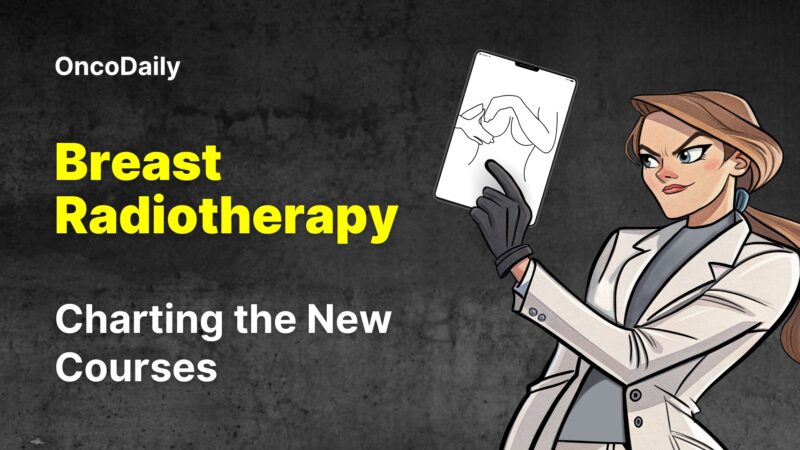
How Can Breast Cancer Be Prevented?
Preventive measures for breast cancer encompass a combination of regular screenings, lifestyle changes, and dietary recommendations. Here’s a summary based on guidelines from organizations like the American Cancer Society:
Regular Screenings
The American Cancer Society recommends that women at average risk begin annual mammograms at age 40, while those at higher risk may need earlier and more frequent screenings. Clinical breast exams performed by healthcare providers can complement mammograms and vary in frequency depending on age and risk factors. Although not universally recommended, breast self-exams can help women become familiar with their own bodies and detect any unusual changes early, which should be promptly reported to a healthcare provider.
Lifestyle Changes
Regular physical activity—at least 150 minutes of moderate or 75 minutes of vigorous exercise per week—can help lower the risk of breast cancer. Maintaining a healthy weight is also important, especially after menopause, as excess weight can raise estrogen levels, a known risk factor. Additionally, limiting alcohol intake to no more than one drink per day is recommended to further reduce breast cancer risk.
Dietary Recommendations
A balanced diet rich in fruits, vegetables, whole grains, and lean proteins supports overall health and may help reduce cancer risk. The American Cancer Society emphasizes the benefits of a plant-based diet. Choosing healthy fats—like those from avocados, nuts, and olive oil—instead of saturated and trans fats can also be protective. Additionally, limiting processed and high-sugar foods may further lower the risk of developing cancer.
You Can Also Read Danielle Goonan: Leadership, Resilience & Overcoming Breast Cancer by OncoDaily
Written by Aharon Tsaturyan, MD
FAQ
What type of breast cancer did Julia Louis-Dreyfus have?
Julia Louis-Dreyfus was diagnosed with Stage IIIC breast cancer, which is an advanced form of the disease. This stage indicates that the cancer has spread to nearby lymph nodes and may require more aggressive treatment.
How did Julia Louis-Dreyfus advocate for breast cancer awareness?
After her diagnosis, Julia Louis-Dreyfus used her platform to raise awareness about breast cancer, emphasizing the importance of early detection and regular screenings through public appearances, social media, and collaborations with organizations like the Breast Cancer Research Foundation.
What treatments did Julia Louis-Dreyfus undergo for her breast cancer?
Julia Louis-Dreyfus underwent a double mastectomy followed by chemotherapy as part of her treatment plan, which aimed to eliminate cancerous cells and reduce the risk of recurrence.
How can I reduce my risk of breast cancer?
To reduce your risk of breast cancer, consider regular screenings, maintaining a healthy weight, exercising regularly, limiting alcohol intake, and eating a balanced diet rich in fruits and vegetables.
What are the early signs of breast cancer?
Early signs of breast cancer can include lumps in the breast or underarm, changes in breast size or shape, dimpling or puckering of the skin, and unusual discharge from the nipple. Regular self-exams can help in identifying these changes.
What role do genetics play in breast cancer?
Genetic factors, particularly mutations in the BRCA1 and BRCA2 genes, significantly increase the risk of breast cancer. Women with these mutations may consider genetic testing and counseling to assess their risk.
How important is mental health during cancer treatment?
Mental health is crucial during cancer treatment. Patients may experience anxiety, depression, and emotional distress. Seeking support through therapy, support groups, or mindfulness practices can be beneficial.
Can lifestyle changes impact breast cancer survival rates?
Yes, lifestyle changes such as maintaining a healthy weight, exercising regularly, and eating a nutritious diet can positively impact breast cancer survival rates and overall health during and after treatment.
What is the significance of early detection in breast cancer?
Early detection of breast cancer greatly improves treatment outcomes and survival rates. Regular screenings and awareness of changes in breast health can lead to earlier diagnoses.
How can I support someone going through breast cancer treatment?
Supporting someone with breast cancer can involve listening, providing practical help, accompanying them to appointments, and encouraging them to express their feelings. Your presence and support can make a significant difference.
